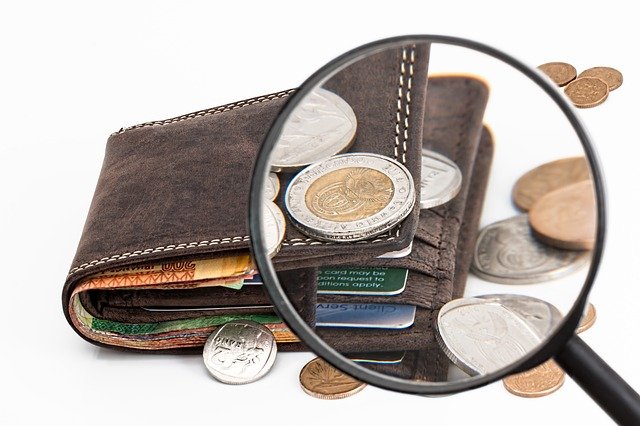Personal finance is the management of one’s financial situation, including budgeting, borrowing, buying insurance, investing for retirement, and selecting a career. Personal finance can also be described as “the art of being wise with money.” In this article, we will break down what is personal finance and the strategies you can follow to practice personal finance to live better lives.
Personal finances are personal because they affect an individual or family. Personal finances are always specific to an individual because each person has unique needs to provide for.
For example, one person will need to spend more of his income on food while another might need to save for a house. It is important to tailor a personal finance plan to a person’s specific situation so that he or she can meet their short-term and long-term goals.
Personal finance includes many different parts. One part is responsible for personal finances. An individual or family must keep track of how much money comes in and how much goes out so that they do not go over their budget.
The two main categories for income are earned income, which comes from work, and unearned income, which comes through investments like dividends or rental income.
Expenses are all the costs that come with running a household, which includes food, rent or mortgage payments, utilities, and clothing. Other expenses include education, healthcare, and insurance premiums.
Key features:
Financial goals:

Many people have at least some idea of what they need to do to have a better financial situation. Even so, their actions don’t always match up with their goals.
When a person has a personal goal of saving money, for example, but they’re going out to dinner and spending money on clothes instead of grocery shopping or investing in a stock market account it can be hard for them to make progress toward those goals if they don’t understand what’s happening.
Social security:
Social security is a pension plan in the United States, which provides some sort of income to retired people and disabled adults. The program was created on August 14th, 1935 by President Franklin D Roosevelt. It is also known as Social Security Act or FICA (Federal Insurance Contributions Act).
Social security has been helping millions of Americans since it came into existence. However, there are many myths circulating about this institution that needs to be cleared up before you make any decisions for your future retirement planning needs. Let’s look at three major ones…
Short-and long-term goals:
The difference between short- and long-term goals can be confusing.
We know that the big picture is what we should be focusing on, but there are things in our life that need to get done right now. Short-term goal setting is all about figuring out how to balance these two needs. The first thing you should do when setting your goals for the next year or more is making sure they’re measurable.
If you don’t have a way of measuring them, then it’s hard to know if you’ve succeeded or not. A good rule of thumb is to make each one something concrete, like getting an A+ on every test this semester or losing 20 pounds by December 31st.
You’ll also want to make them challenging but realistic. If you’re choosing goals that are too easy, then you aren’t being challenged enough to push yourself harder and better your life. However, if they’re impossible to achieve then there’s no point in setting them at all.
Still, even though the goals need to be realistic, they should also push you just a little bit outside of your comfort zone. It’s how you grow and improve, after all.
Retirement planning:

Retirement planning can start while you are employed, even in your 20s. The earlier you begin saving for retirement the less risk you have of having to use high-risk options like selling property or taking out loans in order to finance your later years.
It’s best to set up an automatic savings plan that takes money out of your paycheck and puts it into a retirement account, like a 401(k) or IRA (Individual Retirement Arrangement). Another option is to invest in outside investments that will collect interest over time.
Financial management:
Financial management is a significant part of any person’s life. It can be challenging to balance spending and saving, but with the right knowledge and practices, it becomes easier.
Financial management includes budgeting your money so you know how much income you have coming in and going out each month. It also includes understanding your credit score which will affect what rates you get on loans or credit cards.
One way to understand your credit score is by getting a free copy of your report from annualcreditreport.com every year where all three major companies that analyze your financials are required by law to give you a free copy once per year for this purpose.
In order to make smart decisions about personal finances, one must not only understand their own financial situation, but also the world around them.
For example, if one is unemployed and has no income currently coming in, knowing that they will not be able to pay their bills on time might mean seeking government assistance or borrowing money from friends or family members for necessities like rent or food.
Financial advisor:
Finding the right financial advisor can be an overwhelming task, but it doesn’t have to be. The first step is to do some research on your own. You’ll want to find out what services they offer and how much you’ll pay in fees. This information should help narrow down your search for a good fit.
The second step is to call them up and ask about their credentials if they are registered with any governing bodies or associations, and of course, what you need from them.
Make sure that the person who answers has enough time for you so that you can adequately discuss your needs before making a decision on who will work best for you!
Personal finance education:
Personal finance education is not meant to be a one-time event. It should start at an early age and continue throughout the years. The goal of personal finance education is to teach people how to manage their money, make sound financial decisions, avoid debt, build wealth, and save for retirement.
Personal finance education will help set your children up for success in life by teaching them how to handle money responsibly from an early age through college or trade school.
Investment opportunities:

Investment opportunities are a great way to make money.
Investing in the stock market is one of the best ways to earn more money on your savings and investments, but it can also be a risky venture. There’s no guarantee that you’ll see a return on your investment, so if you’re looking for guaranteed returns, this might not be right for you.
But if you have some extra cash to invest and want to make sure it can grow over time without doing any work at all, then investing in stocks could be what you need!
One of the most popular methods of investing is called “buying shares.” When someone buys shares in a company they are purchasing part ownership in that company. That means every time there is a dividend payment or that company pays off investors, someone who owns shares will be paid money.
However, investing in the stock market involves more than just buying stocks/shares. There are many ways to invest your money, but it’s important to do lots of research before you start because there are risks involved with every method of investment.
Financial planning process:
Financial planning is the process of managing your money and resources over a long period of time. It can include budgeting, saving for retirement or emergencies, buying insurance, and dealing with taxes.
The goal of financial planning is to make sure that you have enough money to cover all of your expenses in each area without running out before you die.
The first step in the financial planning process is budgeting. You should set aside some time every month to examine your income and spending habits so that you know how much money you’re bringing in on an ongoing basis and what sort of expenses are coming up soon.
Next comes savings: setting up an emergency fund, putting away extra cash for large purchases like cars or houses, funding retirement accounts like IRAs, and investing for the future.
The third is insurance: making sure you have enough health or life insurance to protect yourself financially if anything happens to your health or family.
Depending on what kind of coverage you already have (or can get) through your employer, it may also make sense to invest in other forms of insurance like disability insurance, car insurance, and renter’s or homeowner’s insurance.
Financial planning also covers paying taxes on your income each year as well as making sure that you don’t underpay throughout the year through either over-withholding or quarterly tax payments.
The process of financial planning would be simpler if we knew when we were going to die. While we can’t know that in advance, financial planners and investment advisors help people save and plan effectively so that they don’t run out of money before they die.
Sources of income:
You may not know it, but there are many sources of income. What you earn from your job, what you can make by renting out a spare room on Airbnb, and the money that comes in every month from Social Security benefits are all examples of sources of income.
But they’re not the only ones! If you have a hobby like photography or sewing clothes as a side gig, those count too. You might also make some extra cash by selling items at craft fairs or consignment stores.
And if none of those sound appealing to you because you work full-time hours and don’t want to spend any more time than necessary away from your family and friends? Well then maybe it’s time for a little creative thinking.
“I can make some money by doing this” is a great way to start brainstorming ideas about your own sources of income. And it also points us in the direction of what you can do with that extra cash once you earn it the possibilities are endless!
After all, if you have an idea for how to spend your newfound fortune, why not make it a reality? Or pool some of your extra money together with your friends and family members to book a vacation.
With all the choices for what to do with your sources of income, it’s up to you how you use them. Maybe one day soon, they’ll add up to something even better than just “extra”
Insurance policies:
Do you know the difference between a “term” insurance policy and an “endowment” or “permanent” policy? If not, then this article is for you.
A term life insurance policy provides protection for a predetermined period of time. For instance, if your spouse dies after 10 years, the insurance company will pay out on the death benefit only if it has been in force for at least 10 years.
Term policies are often cheaper than other types of policies because they do not offer ongoing protection after the initial period ends but they cover you during that initial period.
A permanent life insurance policy is designed to provide long-term coverage against death or disability. It never expires unless you choose to cancel it. The premiums of permanent policies are higher than those for term insurance, but the payout is greater.
Financial progress:

Financial progress is the ability to save money and spend less than what you earn. It can be achieved with discipline, smart decisions about your spending habits, and by living within your means. The goal of this paragraph will be to provide an introduction on how to achieve financial progress in life.
It’s easy for people who are struggling financially or even those who are doing well but feel like they need more out of life, to get caught up in the cycle of buying things that make them happy right now or give them a temporary high.
They may use credit cards or borrow money from friends and family without really thinking about the consequences because it feels like all their problems would go away if they just had another $500 dollars in their bank account tomorrow. However, as many people find out the hard way, it doesn’t work that way.
Financial investments:
Financial Investments are important for everyone. They can range from stocks, bonds, mutual funds to real estate. Financial investments are a way to save money and earn more income in the long run. When you start investing early on, your money will have time to grow which means that you’ll have more money over time.
The earlier you start the better off your retirement will be because of compound interest. Compound interest is when an investment earns returns based on its own earnings as well as all previous earnings made by it or any other investments made with it.
There are many different types of financial investments but not all of them are worth doing research on before making a decision about what type of investment would work best for you and your needs.
It’s important to know the difference between the two types of financial investments. The first type is known as equity investments which are where investors purchase shares of a company in an Initial Public Offering (IPO) or on a stock exchange.
Stocks are part of equity investment because they give you shareholder rights and dividends that are paid on a regular basis.
On the other hand, a debt investment is when an investor loans money to a company or government. Debt investments are at risk of fluctuating interest rates and can lose value if the borrower defaults on payments. This type of investment usually has a high return because of high-interest rates but it can also be risky.
One last way to save is through a financial investment with your employer called a 401k. This type of investment automatically pulls money out of your paycheck for you so that you don’t have to worry about saving any extra money yourself.
10 Personal Finance Strategies
There are many ways to make money, but if you’re looking for a way to make money without doing anything but having your bank account balance grow, this post is for you! Here are ten personal finance strategies that will help you grow your savings.
1. Make Saving Automatic

Whether it’s putting a set amount into a savings account each paycheck or signing up for automatic transfers to an investment account, making saving automatic makes it easier not to spend the money on something else.
2) If you’re not able to do it automatically, set up reminders on your phone for yourself.
3) Save enough to make an impact, but don’t stress out about getting “rich quick”.
4) Start saving early and take advantage of compound interest.
5) Don’t try to save too much all at once.
6) If you are trying to get out of debt, save what you can while paying the minimums on your debts.
7) If you have extra money at the end of the month, don’t blow it – plan for your future self.
8) Don’t feel too bad about spending some of your saved money on yourself sometimes.
2. Find Your Spending Limit

I like to think of it as “training your brain” to spend money. It kind of makes sense, right? The younger you are (and I’m assuming this is for people who are old enough to have their own income), the more you have to do with your finances.
First, begin by saving a small amount of money each day for a few weeks or so, until you hit your goal. Then, start trying to take an item out of the house every day that costs at least one dollar.
Somehow it’s easier when it’s just one dollar! Gradually, you’ll learn how to make your money stretch and save more each day.
There’s nothing wrong with indulging in things that make life more enjoyable like eating out or going on vacations. However, there will be times when we need to cut back and save.
Figuring out where we spend the majority of our money and finding ways to reduce excessive spending and unnecessary expenditures will allow us to save more for other things.
3. Set Realistic Goals
Setting realistic goals is important, but sometimes it can be difficult. For example, if someone has never exercised before, they may try to sign up for a marathon after feeling inspired by the people around them. It’s important to set goals based on your current abilities and pursue those first.
To set realistic goals, identify what you want to achieve then break it down into small steps that are feasible for the individual.
For example, if one goal is to start running 10 kilometers at some point in the future; assign small tasks like stretching before running one kilometer each day until the person becomes comfortable with exercises like running on a daily or weekly basis.
If this feels like too much of an overwhelming task (because of bad mental habits, like perfectionism), try to avoid thinking about what you want to achieve in the future. Focus on the immediate present and decide how to work towards your goals one step at a time.
If goal-setting still feels too difficult for you, ask someone close to help you break down your goals into small tasks that are manageable. Doing this will make it easier to accomplish your goals.
To meet your goals, you need to be realistic about how much money you make, how much you spend, and what kind of resources are available to you.
4. Create a Budget

You should start by creating a list of all the important expenses you must pay each month. Next, divide this number by the amount of income you receive each month. This will give you an idea of how much money is available to spend on your wants and needs.
If it turns out that there’s not enough money to pay for everything, then cut back on your wants and needs until you’re satisfied with what’s leftover.
If the budget appears to be unbalanced, you can draw it out by listing your expenses and income on a spreadsheet. From there, decide where you want to cut back and record this change. If you’re consistently left with money at the end of the month then consider saving some for later or rewarding yourself.
Budgets may be created in various ways. Some of the most common ways are to make a spreadsheet or list of expected monthly expenses, to list expected monthly income, and to make an outline of what is needed/wanted versus what can be given up.
Once this is done you’ll want to compare your budget with your reality – make sure that there’s enough money to go around, and that the difference isn’t too big. If it turns out that there’s not enough money to pay for everything, then cut back on your wants and needs until you’re satisfied with what’s leftover.
Allocating your income to different expenses, carefully considering how much money you have leftover for savings, and being sure that the goals you are striving for are not undoable can help you stick to a budget even if it’s tough.
5. Make Saving Money Fun
Saving money is a task that can sometimes be difficult. It’s hard to resist the temptation to buy food or clothes when you see them at such great prices, and it’s always tempting to just get more money on your credit card for unexpected expenses.
However, there are ways to save money on purchases while still enjoying yourself and spending on what you want.
One way is to not buy something new all the time. So instead of buying new clothes each week, try looking through your closet and see if there’s anything new in there that you can wear instead of buying something new.
There might be some old shirts in the back of your closet that you never wear anymore but could go with a pair of jeans that you like wearing. You can also try shopping for clothes at second-hand stores like Goodwill or Plato’s Closet.
Additionally, try saving money on food instead of buying it by growing your own plants, cooking more meals at home, and doing things like clipping coupons to save some extra cash.
Another way to make saving money fun is to treat yourself from time to time. For example, you can treat yourself by going out to a nice dinner with your significant other or friends, buying a new video game that you’ve been wanting for a while, or going on a vacation.
If you spend money on something fun then it may motivate you to not want to spend as much in the future so that you can save up for another fun thing to do.
Overall, you don’t always have to spend money on something new just because you see it and want it. You can try to enjoy things that you already own or buy things that are on sale at a great price. Also, don’t be scared to treat yourself every once in a while to make your saving money fun.
Instead of “saving money,” call it something fun like a “piggy bank” or a “treasure jar.” This will make saving more exciting and motivating.
6. Budget for Emergencies

From car repairs to medical emergencies, it’s always good to be prepared for the worst-case scenario. As an emergency fund can take years to set up, there are other ways to prepare for the unexpected.
One way is to start saving small amounts of money in a “rainy day” account that can act as a buffer if you’re faced with sudden expenses. Another way is to have a budget that includes room for emergency funds and an emergency plan just in case something does happen!
An emergency fund is essential for unexpected needs like medical emergencies, vehicle repairs, or home damage. However, an emergency fund can take years to set up with the typical income of most people in the world.
How can you prepare in case of an emergency? A positive solution would be to start saving small amounts of money in a “rainy day” account that can act as a buffer if you’re faced with sudden expenses.
Also, planning your finances by having an emergency fund and an emergency plan is helpful just in case something does happen!
It’s always good to be prepared for the worst-case scenario. Unfortunately, unexpected expenses are part of our everyday lives. This means your hard-earned money can be used up quickly on things you didn’t expect. So how can you afford the unexpected?
If you don’t plan ahead for unexpected expenses, not only can they be really disruptive to your savings goals but they can also put you into debt. It’s really important to have a monthly, weekly, and even daily budget in order to make sure you can pay for the things that come up.
7. Pay Yourself First
“Pay Yourself First” is a phrase that means that you need to set aside a certain amount of your income for yourself before you pay all your other bills or debts. The theory behind this philosophy is that when people have been putting themselves first, they will be in a better position to financially take care of themselves and their families.
The idea behind “paying yourself first” is that if you don’t put anything away for yourself, then any emergencies or unexpected expenses will make it difficult for you.
It’s important because it allows people to save up an emergency fund in case they end up getting laid off from work, get into an accident, etc. If they don’t have money in reserve, then they’ll have no choice but to borrow or dip into their savings.
Paying yourself first is a great idea, but it’s also important to remember that you should treat yourself as well by allowing yourself some occasional luxuries- just don’t go overboard and spend all your money so you have none left over for saving purposes!
Make it automatic by having money automatically taken from your paycheck and saved before anything else is paid like bills or other expenses. Then treat yourself to something small when you get your paycheck.
8. Remove Your Credit Cards from Your Wallet

Most of us carry around credit cards or store cards in our wallets. You may see your wallet as the last place you’d want to let go of these cards. However, I found out that this is precisely what you should do.
I had my wallet stolen with all my cards inside about three years ago, and it wasn’t until I was completely broke that I realized how much it hurts to be robbed like that.
If only I had removed the cards from my wallet before leaving them on the table at the restaurant, what would have happened? It would be entirely possible for me to have avoided this situation entirely.
And so, now I remove all my credit card(s) from my wallet before I go out to eat, or just about anywhere I might leave my wallet. It’s much easier than you think – all you have to do is simply open your wallet, remove the cards and place them in your coat pocket or handbag where they’re less likely to be stolen by pickpockets.
Of course, if you’re carrying a purse or a bag, the best way to keep your cards secure is to not carry them at all. Just leave them at home when you go out with your family and friends – don’t give criminals an opportunity when they can easily take advantage of you.
If you have a wallet chain or a lanyard, you can easily hook it onto your belt or pocket. It’s much more difficult for a pickpocket to grab the wallet out of your handbag if you are wearing it around your neck.
And finally, there are some other obvious precautions that one should take to ensure that they don’t end up as I did. If you’re going somewhere that might not be safe, like a bar or nightclub where there could be troublemakers and drunkards, then let someone know where you’re going and how long for.
When we go out we should try to do it with friends who would look after us rather than strangers who may hurt us.
It’s a lot harder to spend if you don’t have access to your credit cards. If you want to be safe, consider reporting the card as stolen so that no one else can use it.
9. Save on Interest Charges
To pay off your balance faster, you can take out a lower-interest-rate loan to pay off the balance of your higher-interest rate loan. This is called refinancing your mortgage or taking out a personal loan or HELOC.
Take into account that this may increase the total amount of interest you pay over the life of the loan. It can also make it impossible for you to repay your balance in full without further borrowing because both debts are now on the same balance sheet.
And if you need to use money from your savings account to make up for an emergency expense, the cash will be taxed twice—once when it’s withdrawn and next time when it’s paid back into the account as a new withdrawal.
You can also earn money on some of your savings, but you must be extremely cautious.
If you are considering transferring your balance to a credit card with a lower or no transfer fee, there may be some considerations that affect the overall cost of the transfer.
For example, if you plan to pay off the new debt within three months, you will pay no interest if the transfer happens within 21 days. But if you transfer your balance after 21 days or more, you’ll have to pay interest on the entire amount being transferred at whatever rate the issuer applies to purchases.
If your credit card has an introductory 0% purchase deal that will expire in three months or less, you could avoid interest charges by transferring the balance to the card with the 0% balance transfer deal. But make sure you can pay off all of your debt before that introductory period expires.
If your credit card has an introductory 0% balance transfer offer, you can take advantage of it for a limited time without paying any interest on the transferred amount. Many cards offer a balance transfer deal for 12 months or more, and some even extend that to 21 months.
So if you need several years to repay your debt, ask the issuer about an extended 0% purchase offer. Some card issuers will allow you to make a small payment (usually 3%) while the rest of the balance has no interest. Make sure you can pay off the balance in full before that introductory offer expires.
You must be careful about transferring a balance from a card with a high APR to a new card with a 0% interest period if the 0% interest is eliminated after a short time, or if there’s an annual fee for using your card even when you don’t borrow.
If you can’t pay off your entire balance before the introductory period expires, you will have to start paying the high interest again on all your debt from the date of the last payment.
For example, say you have a balance of $20,000 on a card with an 18% interest rate and you transfer it to a new card with a 0% interest rate for 15 months. You have six months to pay off your debt before the introductory period expires, but you only pay the minimum amount every month.
If you make a single payment of $20,000 at the end of the first five months and continue making monthly payments of $500 instead of paying off the full balance, you will pay $3200 in interest and your total loan to date will be $20,320.
If at the end of the introductory period you continue to make monthly payments of $500 instead of paying off your balance in full, then after 15 months all that debt will have accumulated another 18% in interest ($3200), and you will owe $33,200.
If your credit card offers a 0% interest period for 12 to 21 months, it’s often the best way to consolidate and reduce your high-Interest debt. But if you transfer your balance when there are only six months or less remaining in the introductory period, you may pay more interest in the long term.
Avoid interest charges by not carrying a balance on your credit card, avoiding late payments, and making sure you have at least three months’ worth of expenses saved in an emergency fund.
10. Read Personal Finance Articles

I love reading articles about personal finance, so I decided to write an article about it. There are so many benefits to reading these types of articles. It can help people get better jobs, manage their money better, and avoid living paycheck-to-paycheck.
The more you read these types of articles, the more you will be able to learn how to invest your money.
This is a great way for people to grow their wealth while also getting insight into other personal finance-related topics. You will also gain valuable knowledge that will help you set aside money each month for savings and retirement.
The author talks about 10 reasons why everyone should be reading personal finance articles. They discuss how this is a great way to manage your money better, gain valuable finance knowledge, get new insights on financial topics, learn how to invest money, and more.
There are so many benefits associated with reading personal finance articles. One of the main reasons people should read these types of articles is because they can help you get a better job.
For example, if you’re having trouble making ends meet at your current job, you might consider reading a couple of articles about how to ask for a raise or go back to school and get a higher-paying degree.
Once you have read these types of articles, it is important that you actually take action and do what they say. If you don’t, then it isn’t as beneficial as you might think. You can read all the articles in the world, but if you don’t do what they say, it doesn’t matter.
For people who are having trouble managing their money or are struggling financially, reading personal finance articles is a great way for them to learn how to get back on track with their finances.
If you have debt, you should definitely check out some personal finance articles on debt management. You could also read one or two about saving money because everyone needs to put some away for the future.
If you are not familiar with investing money, pick up a couple of personal finance articles about this topic because it is an important aspect of growing your wealth. Once you have a good amount of money, you should consider investing it.
One important note to make about personal finance articles is that they can be very valuable, but you have to remember that they are also written by someone who has their own opinion and not everyone’s opinion will be the same. Make sure you read an article or two from different sources and compare.
Choosing some good personal finance articles to read is a great way for you to get new insights on various financial topics. I hope that this article gave you 10 reasons why you should be reading these types of articles, so consider checking some out today!
Included in the article are three sentences about what each paragraph will discuss. This gives the reader an idea of what they will be reading about, and it makes it easier for them to follow along with the points the author is trying to make.
The article was written in the third person point of view, which most academic writing tends to be written in. There are five paragraphs total, each discussing a different point, which makes it easier for the reader to follow along with what is being discussed.
There are many cohesive devices in this article that tie paragraphs together, such as sentence structure and repetition. Sentence structure helps the author to have a smooth flow between ideas while words like “for example” or “another point to consider” help remind the reader of what is being discussed.
Repetition of words like “should” and “must” help the reader to realize that they should take action in what they are reading about. Sentence structure can be seen through things like commas, conjunctions, comma splices, enjambment, participle phrases, etc.
This article contains many sentence structures that help keep the flow moving. There are also references made in this article to other personal finance articles that you can find out about by clicking on them, which helps provide further insight into the topic.
This helps to provide more knowledge for the reader so they know where the information is coming from, and it gives them an idea of what they might encounter in other situations.
It is important to note that this article was written in an informal tone because it’s making a point about why you should read personal finance articles, so it doesn’t need to be too formal.
There are not many contractions used in this article which helps with keeping the flow of sentence structure, but there are some words that are “shortened” such as “shouldn’t”, and there is one sentence that doesn’t have a subject which ends in a preposition.
The author of the article also uses many similes such as “BiggerPockets is like my financial bible.” This makes it easier for the reader to see, understand, and most importantly remember the points that are being made.
This article was also written using many rhetorical devices, such as appeals to ethos, logos, and pathos. Ethos is used when the author says “You could also read one or two about saving money because everyone needs to put some away for the future.”
There are so many great articles that offer tips for saving money! The more you read the better you’ll get at it.
Final Thoughts About What Is Personal finance
Personal finance is the process of managing one’s personal finances, including a person or a household’s income and expenses. Personal finance can also be defined as the study of how people manage their money from “day-to-day” living.
As such, it encompasses both financial planning and management at all levels individual, family, organization/institution (business), and government/state. It includes budgeting for expenditures in different categories- food costs versus mortgage payments.
Deciding which insurance policy will provide better coverage against certain risks or even whether to buy stocks with earnings every year or invest in bonds that pay interest semi-annually.
Hope this article has helped you to understand what is personal finance properly. Other than learning personal finance strategies, there are some negative things like tobacco use that can negatively impact personal finance. So be aware of that always.


1 thought on “What Is Personal Finance? – 10 Strategies Successful People Practice”